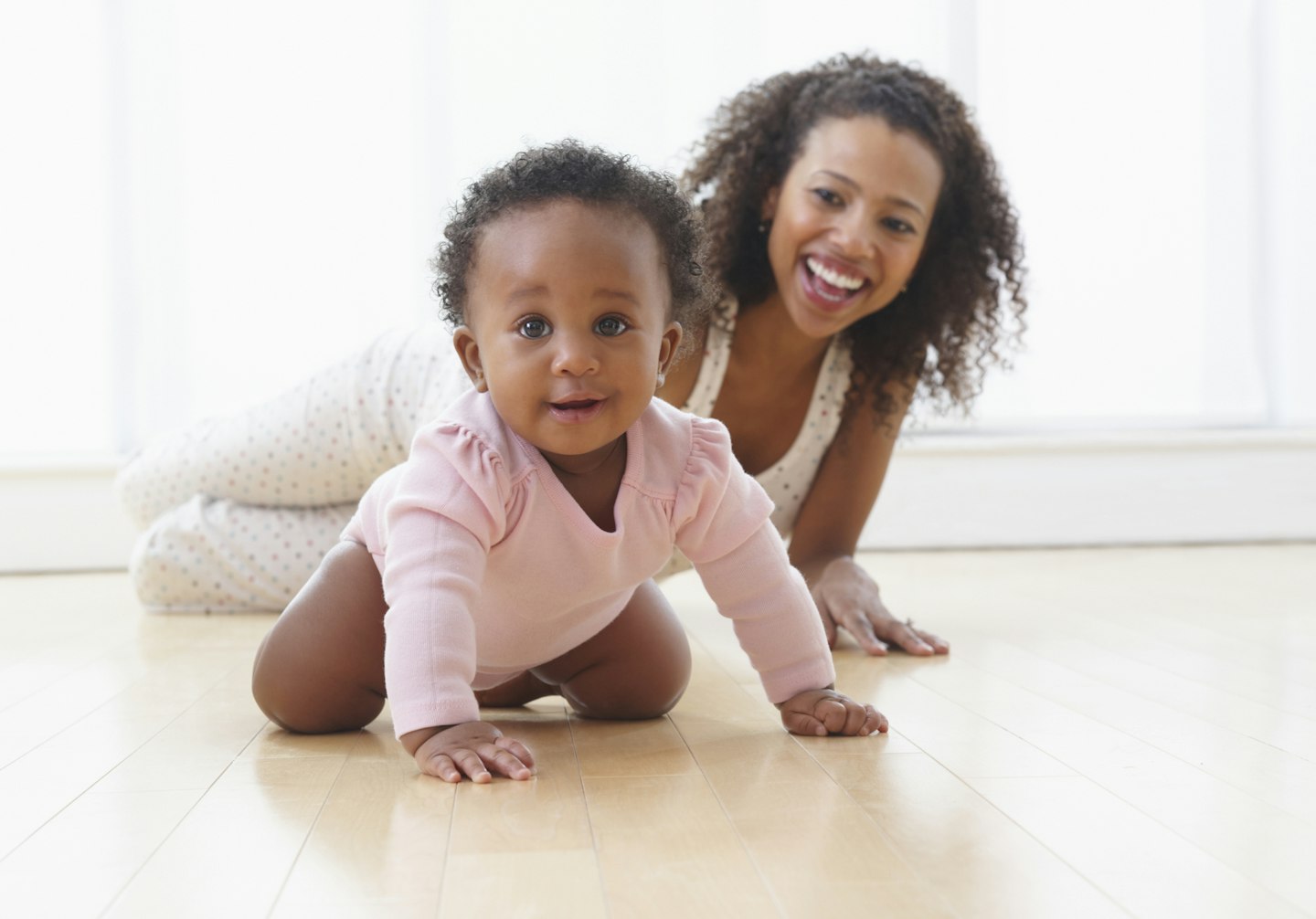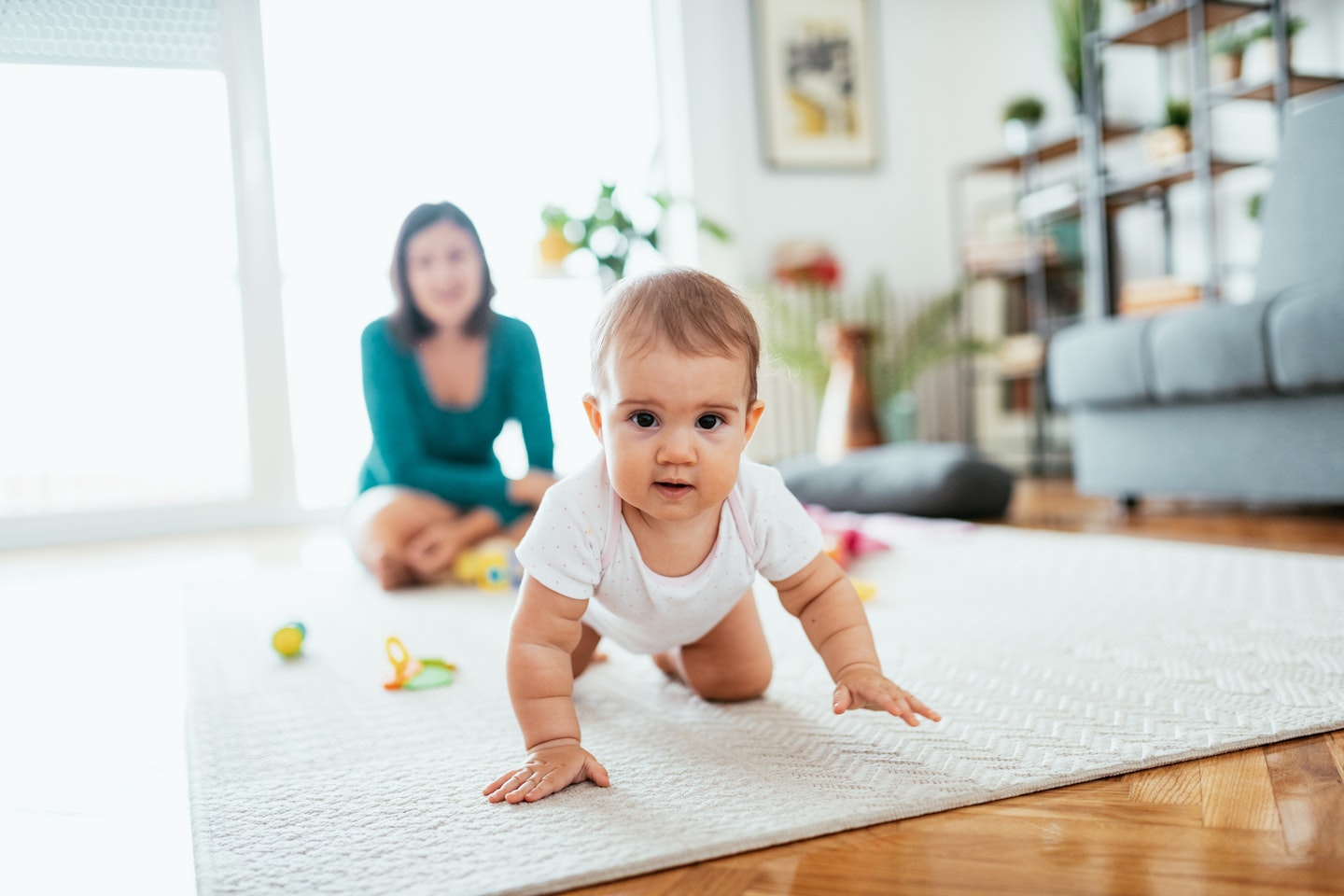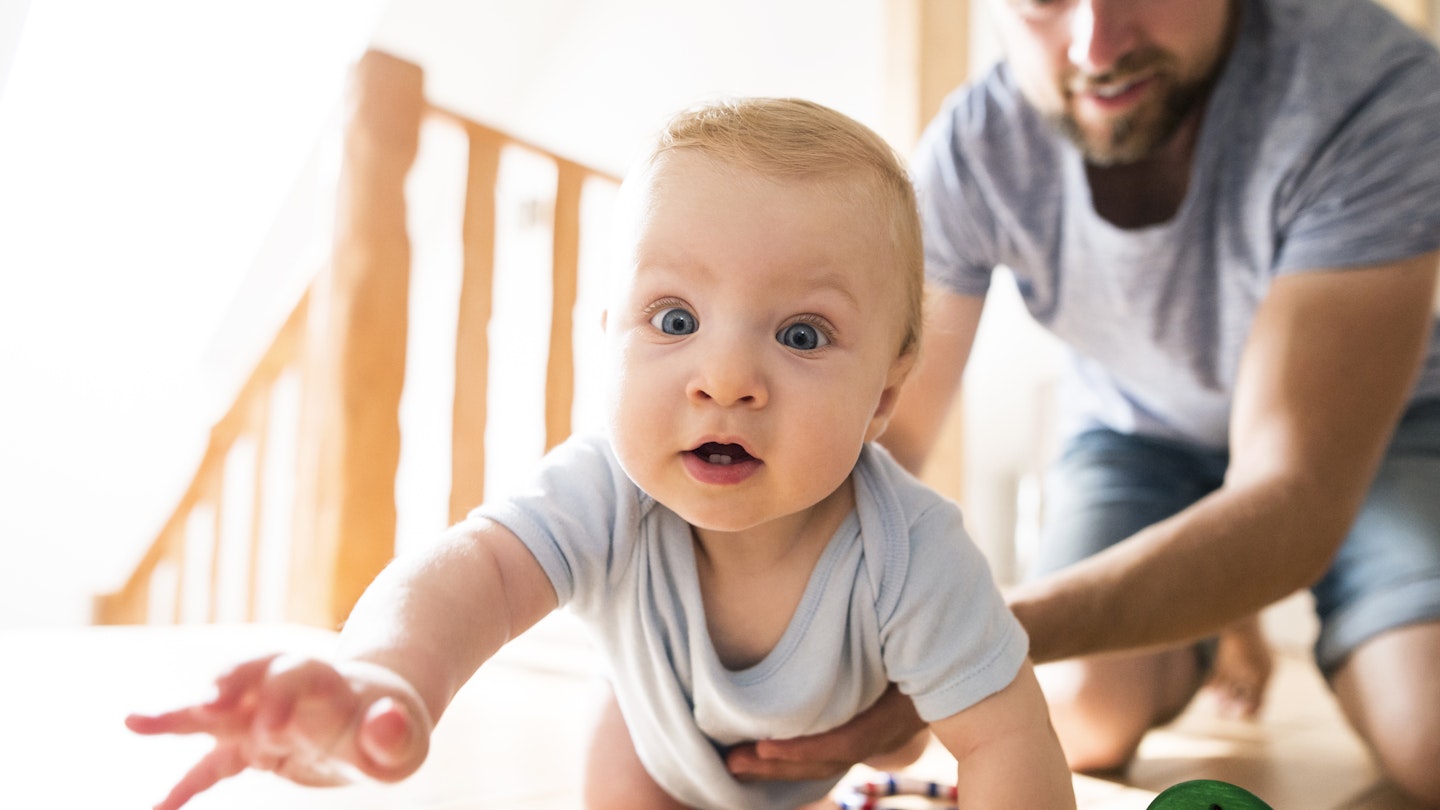Watching your little one grow and reach new baby milestones in their life is incredibly heartwarming. The first few months of babyhood go by so quickly, and before you know it, you can see those little legs getting eager to move, so it's natural to wonder when do babies crawl.
It might have felt like only yesterday when you were counting down the days until when your baby would sit up, but it can quickly get tiring when infants learn how to crawl as your little one will rapidly start exploring the room and you'll need to move almost everything out of their reach.
If you think your baby is ready to crawl, or if you're just wondering when they'll start, here's what you need to know about when babies learn how to crawl and what you can do to encourage them.
What age do babies start to crawl?
Most babies start to crawl between 7 months and 10 months old after they've learnt to sit up. Whilst the 9-month-old mark is the average age for little ones to crawl, it might take some babies longer to learn to crawl or they might skip the phase entirely and start pulling themselves up to learn how to walk.

Tips to encourage your baby to crawl
While you can't teach a baby how to crawl, you can encourage them to reach this developmental milestone in a few different ways. These steps are great for helping your baby to crawl.
1) Give them plenty of tummy time
Tummy time is important for a baby's development as it helps to strengthen their muscles. Give your little one plenty of supervised tummy time play, as this will help them develop the strength to crawl and roll over by using their arms, legs and head control.
2) Make sure there's plenty of space
Child-proofing is very important, especially when you think your little one is getting ready to start moving! Make sure there's plenty of space for your little one to move around and move any potential safety hazards out of the way, such as coffee tables and ornaments.
3) Encourage them to reach for toys
Lay interesting toys near your baby when they're doing tummy time to encourage them to reach out. Toys that move and make noise are great to use to attract your little ones' attention, and they will eventually start moving towards them.
4) Help them to move
When your little one is just learning to crawl, a good way of helping them is by putting the palms of your hands against their feet so that they can push off against them. It's a great way to help them get control of their movement, and once they realise they can move forward, they'll start pushing their feet against the ground to crawl.

Baby crawling styles
Starting to crawl is a huge deal for your tot - and each baby has a different way of doing it. From the crab crawl to the bottom scoot crawl, see if you recognise your baby's technique...
The classic crawl: Baby alternates arms and legs, getting the arm on one side to hit the floor at the same time as the leg on the opposite side.
The belly crawl: Also known as the commando crawl! About half of all babies begin crawling by keeping their tummy against the floor as they move. Belly creepers usually begin crawling earlier than four-on-the-floor crawlers because they don't get up on their hands and knees, which requires greater strength and balance. Some babies use belly crawling as their only method of crawling until they learn to walk; other babies shift to the classic crawl before they start walking.
The bear crawl: Baby walks on all fours, arms and legs unbent.
The crab crawl: Baby pushes with arms instead of pulls which has the unintended, and frustrating, consequence of sending baby backwards.
The leapfrog crawl: Baby makes a bridge with their arms and legs and then thrusts forward.
Rolling: Some babies get so good at rolling that it becomes their primary way to get around.

Crawling safety
Once your baby is on the move, you'll need to ensure their brand new world is ready to explore safely. That's why it's so important to babyproof your home at this stage of your child's development. It might sound strange but some parents find it useful to get down on all fours and move around their house so they can see everything as their baby does and what obstacles they might come into contact with.
As with everything, you'll need to keep a close eye on your little adventurer at all times, even more so now they're on the move as it's unlikely they will want to sit still in one place!
What if my baby doesn't start crawling?
The important thing to remember is that all babies are different. Some start crawling as early as 6 months old while others might not crawl at all and could just go straight to walking! Don't push your little one to crawl if they aren't ready as it can slow down development, just gentle encouragement when they show they're ready will help them figure it out.
However, if you have any concerns about your little one's movements then mention it to your Health Visitor or see your GP.
Emily Gilbert is a Digital Writer for Mother&Baby and has written for the website and previously the magazine for six years. Specialising in product reviews, Emily is the first to know about all the exciting new releases in the parenting industry.
